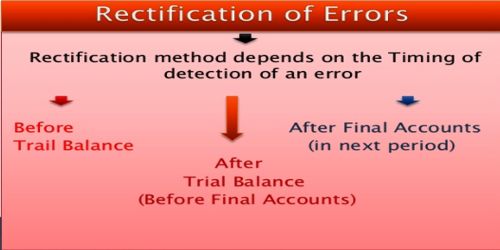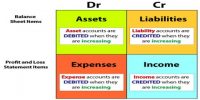Basic Principles for Rectification of Errors
Correcting the errors that has occurred is called Rectification. Proper entry is conceded or appropriate descriptive note is written in the exacting account or accounts to neutralize the consequence of errors. All errors, whatever may be their kind or nature, result in one of the following four positions in one or more accounts.
Excess debit in one or more accounts: This necessity be rectified by ‘crediting’ the excess amount to the particular account or accounts.
Short debit in one or more accounts: This ought to be rectified by a ‘further debit’ to the respective account or accounts involved.
Excess credit in one or more accounts: This can be rectified by ‘debiting’ the particular account with the surplus amount involved.
Short credit in one or more accounts: This can be rectified by a ‘further credit’ to the respective account or accounts involved.
The following three steps may be adopted while attempting to rectify an error:
- Ascertain what has actually been done, i.e. what is the error?
- Make sure what ought to have been done, i.e., the correct record.
- Decide what is to be done in view of what has been done and what ought to have been done, i.e., rectification.
















